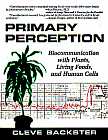
Studies in Character Analysis

Description
By Manly P. Hall
This reprint is from the famous mystic teacher and author of 'Secret of All Ages', Manly P. Hall. Phrenology, Palmistry, Physiognomy, and Graphology are all covered.
A concept can be demonstrable and yet not entirely explainable. Character analysis is sustained by a long and honorable tradition, and has been of profound interest to scholars since the beginning of man's intellectual life. The formulas used in the practice of the art have been justified by centuries of observation, as is evidenced by the records and findings available for modern consideration. Experimentation is more difficult because of the nature of the subject, but may be covered in part by the direct application of accepted rules and methods in daily practice.
From the Introduction:
It should be understood that the following articles constitute an outline of popular systems of character analysis. Those desiring to make a serious study of the field must avail themselves of the extensive literature which h~as accumulated through the centuries. There are outstanding authorities who have devoted their lives to the gathering and arranging of data and the presentation of highly perfected systems of analysis. Some of these are mentioned in the text, and others will come to the student's attention as he proceeds.
It must also be borne in mind that there are prominent opponents and critics, whose doubts should be examined in a spirit of open-minded investigation. The principal objections arise from the assumption that these analytical arts are in conflict with the present findings of the exact sciences. It is only fair to note, however, that such subjects as phrenology, physiognomy, palmistry, and graphology have also been stoutly defended by men scientifically trained and well qualified to present their findings with considerable skill and ingenuity. It is therefore unwise to permit a negative scientific attitude to be regarded as conclusive. The opinions of scientists have frequently been reversed in almost every field of research.
In judging the validity of any branch of learning, we must have recourse to the criteria of tradition, observation, and experimentation.

Much depends upon what we consider to be valid evidence. In the case of palmistry, for example, Count Hamon (Cheiro) told me that he had devoted a professional career of nearly fifty years to his chosen subject. During this time, he had read and analyzed more than twenty-five thousand hands, and had kept impressions of the more interesting ones. He checked his original readings and conclusions by keeping track of the careers of innumerable individuals, and was completely convinced that the lines in the hands were a reliable index to character, and indicated clearly the principal happenings which would arise in life. It is difficult to discredit such concepts and findings, especially when most critics who condemn them have actually given the matter little thought or attention.
The same is essentially true of the other fields. Certainly Lavater in physiognomy, and Fowler and Spurzheim in phrenology, were not dilettantes, but sober and sincere persons, defending their convictions against ridicule and even scientific persecution. In all arts, proof rests with demonstration. A fact cannot easily be denied, and that which is factual must ultimately be accepted as scientific. Our purpose is not to prove, but merely to present certain long-accepted traditions and practices. Their final demonstration rests with those who master their principles, accepting or rejecting by valid evidence alone.
Another question naturally arises, especially with the layman. Are the findings of character analysis, by methods outlined in this work, dependable? Here, two factors present themselves. Is the system itself true and trustworthy, and is the practitioner or exponent of the system adequately informed and free from unfortunate prejudices or opinions? The same problem presents itself even in such an accepted science as medicine. Doctors often disagree in the diagnosis of a common ailment, and the human equation cannot be ignored. Indications would make us inclined to feel that when the practitioner is deeply skilled and adequately trained, character analysis has been demonstrated to be highly accurate. Some may feel that this accuracy is partly due to the development of intuitional faculties, but this has also been claimed of the medical practitioner. There can be no doubt that long and intimate contact. with human beings, their temperaments and their problems, results in the strengthening of perceptive and apperceptive powers. This is not a complete explanation, however, and has never been accepted as final by the practitioners themselves. They have all maintained that their conclusions were based upon the rules of their arts and the bodily structure which they were examining. Countless persons have claimed that they have been accurately analyzed, and the analysts have been given increasing recognition and respect.
Some may say that this is not conclusive evidence, inasmuch as failures have been ignored or forgotten. On the other hand, the more prominent exponents of these arts have moved in circles of students and admirers who kept more or less accurate records, and certainly would not have failed to notice glaring and frequent errors. It is also interesting that the sincere and informed practitioners of these human sciences have never renounced their findings, declared themselves wrong, or ceased in their interests. The belief that such men were merely exploiting public gullibility for financial advantage is untenable. Most of them suffered much more in terms of loss of prestige and depletion of income than they ever gained. From their writings, we discover that they were champions of causes, devoted to their convictions at all costs.
85+pages - 8.25 x 5.25 inches SoftCover
















